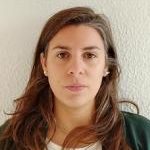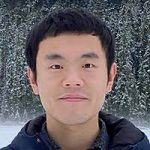Day: October 24th 2022 (half day – morning)
Time: TBD
Location: Expo Tel Aviv International Convention Center and virtual
Slides, material and recorded videos will be provided on this page
OVERVIEW
The use of 3D point clouds for Cultural Heritage (CH) assets is becoming paramount, since they allow metric and morphological analyses impossible with the use of 2D data, better interpretation of phenomena, valorization and visualization, innovative management, development of conservation strategies, etc.
In the last few decades, the increasing adoption of geomatics techniques for data collection and processing, contributed to the massive 3D-metric documentation of the built heritage. However, the complexity of CH assets makes the exploitation of 3D point clouds very impervious. Moreover, the provision of massive 3D geometric information with only color attributes could hamper their full exploitation due to the lack of semantic information. Therefore the need of efficient, reliable and automated solutions for heritage point cloud classification is necessary in order to widespread the use of such kind of data among heritage conservators, restorators, managers and HBIM (Historical Building Information Modeling) experts. Towards this end, the development of Deep Learning frameworks for point clouds classification is filling this gap, proving to be a very promising, but complex, field of research. These frameworks are designed to semantically enrich point clouds based on some specific classes, quite often case-dependent. These frameworks may facilitate the recognition of historic architectural elements at an appropriate level of detail, thus speeding up the process of reconstruction of geometries in the HBIM environment, or they can automatically identify degraded areas to speed up restoration processes.
In this tutorial, we cover different Deep Learning methods for semantic segmentation tasks, providing the audience with a wide outlook upon the most recent Neural Networks. We also broaden the discussion over the more appropriate combination of hyperparameters, attempting to define a joint pipeline of work for the CH domain. Besides pre-processing and optimization techniques for CH datasets, we will also discuss the application of a specific layer designed to better capture local geometric features of point clouds, which is nowadays the more challenging task.
The goal is to explain the principles behind solving point cloud semantic segmentation and give practical means for engineers and researchers (whose main competences may lie elsewhere), to apply the most powerful methods that have been developed in the last years. It will be presented and practically demonstrated how to formulate and solve point cloud semantic segmentation in CH domain with freely available software that will be distributed to the participants of the tutorial.
PROGRAM (TBD)
ORGANIZERS

Andrea FELICETTI
Marche Polytechnic University

Benedetta GIOVANOLA
Macerata University

Francesca MATRONE
Polytechnic of Turin

Marina PAOLANTI
Macerata University

Roberto PIERDICCA
Marche Polytechnic University

Yue WANG
Massachusetts Institute of Technology
INVITED SPEAKERS
TBD
MATERIAL
SCIENTIFIC COMMITTEE
Paolo Clini – Department of Civil Construction Engineering and Architecture (DICEA), Marche Polytechnic University
Emanuele Frontoni – Department of Political Sciences, Communication and International Relations, Macerata University
Andrea Maria Lingua – Department of Land, Infrastructure and Environmental Engineering (DIATI), Polytechnic of Turin
Eva Savina Malinverni – Department of Civil Construction Engineering and Architecture (DICEA), Marche Polytechnic University
Adriano Mancini – Department of Information Engineering (DII), Marche Polytechnic University
Fabio Remondino – 3D Optical Metrology Unit (3DOM), Bruno Kessler Foundation
Primo Zingaretti – Department of Information Engineering (DII), Marche Polytechnic University
CONTACTS
Please contact Marina Paolanti if you have any questions or concerns.


